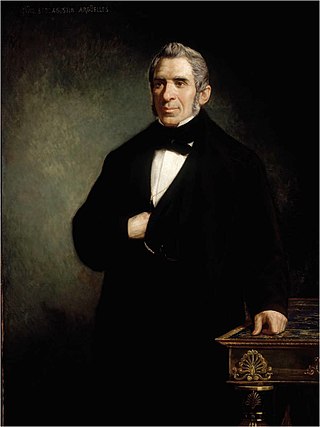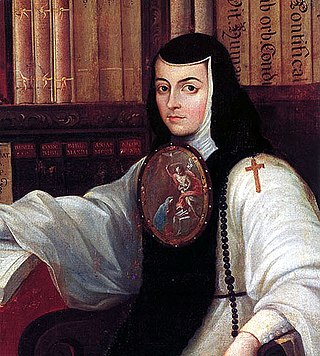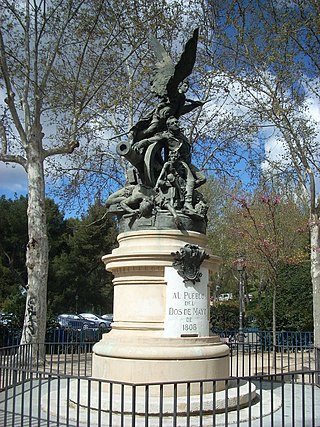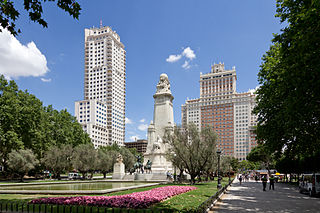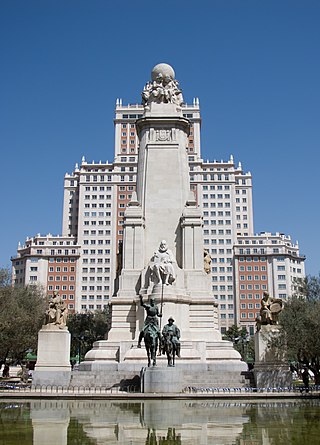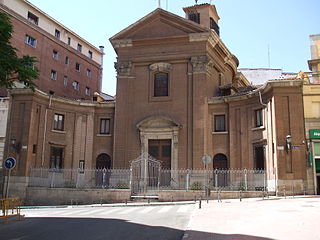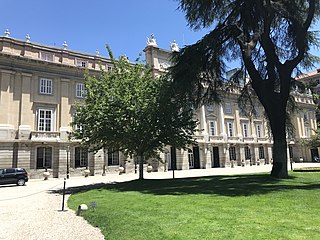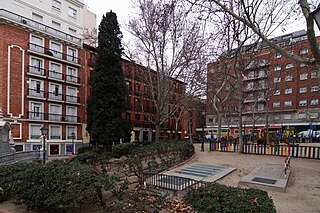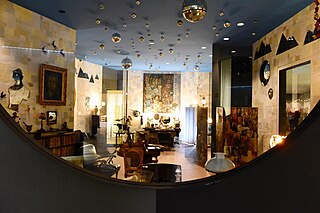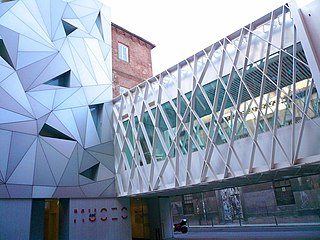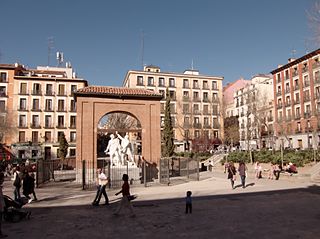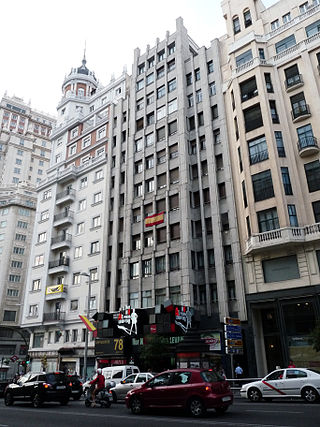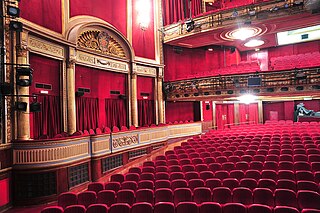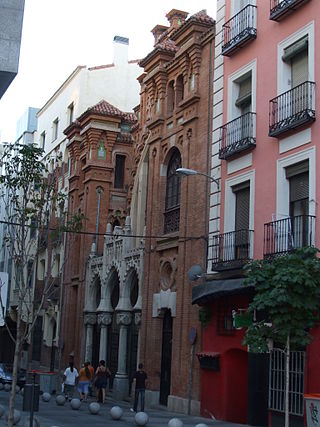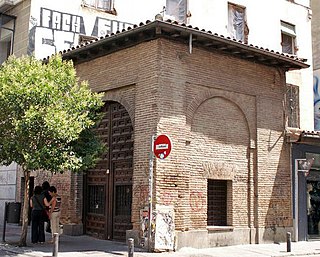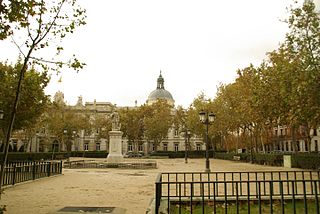Self-guided Sightseeing Tour #3 in Madrid, Spain
Legend
Guided Free Walking Tours
Book free guided walking tours in Madrid.
Guided Sightseeing Tours
Book guided sightseeing tours and activities in Madrid.
Tour Facts
9 km
198 m
Experience Madrid in Spain in a whole new way with our free self-guided sightseeing tour. This site not only offers you practical information and insider tips, but also a rich variety of activities and sights you shouldn't miss. Whether you love art and culture, want to explore historical sites or simply want to experience the vibrant atmosphere of a lively city - you'll find everything you need for your personal adventure here.
Activities in MadridIndividual Sights in MadridSight 1: Monumento al Maestro Quiroga
Manuel López-Quiroga Miquel, better known as Maestro Quiroga, was a Spanish composer especially known for his coplas, cuplés, and zarzuelas. He was also a pianist and one of the group of songwriters, Quintero, León and Quiroga, who created some of Spain's most popular and best-known songs from the mid-twentieth century.
Sight 2: Monumento a Agustín de Argüelles
Agustín de Argüelles Álvarez, nicknamed "the Divine" for his oratory during the Cortes of Cádiz, was a Spanish lawyer, politician and diplomat. He was president of the Cortes in 1841 and tutor to Queen Isabel II.
Sight 3: Monumento a los caídos en el cuartel de la Montaña
The Cuartel de la Montaña was a military building in Madrid built during the nineteenth century, located on the mountain of Príncipe Pío. It achieved great notoriety for being the place where the military uprising of July 1936 began in the Spanish capital. It was practically destroyed during the civil war and would later be demolished.
Sight 4: Monumento a Sor Juana Inés de la Cruz
Juana Inés de Asbaje y Ramírez de Santillana, better known as Sor Juana Inés de la Cruz or Juana de Asbaje, was a Hieronymite nun and writer from New Spain, an exponent of the Golden Age of literature in Spanish. He also incorporated classical Nahuatl into his poetic creation.
Sight 5: Parroquia de Santa Teresa y San José
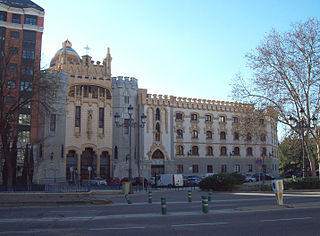
The National Temple of Santa Teresa de Jesús is a Catholic temple located in the Plaza de España in Madrid and belongs to the Carmelite order. With the name National Temple of Santa Teresa de Jesús and Convent of the Discalced Carmelite Fathers, it was declared an asset of cultural interest on December 20, 1995. From 1965 to 2015 it was the headquarters of the Parish of Santa Teresa and San José, which is why the temple is also known by that name.
Wikipedia: Templo Nacional de Santa Teresa de Jesús y Convento de los Padres Carmelitas Descalzos (ES), Url
Sight 6: Monumento al Pueblo del Dos de Mayo de 1808
A los héroes del dos de mayo or Al pueblo del dos de mayo de 1808 is an instance of public art in Madrid, Spain. A sculptural work by Aniceto Marinas, the monument is an homage to the role of the Madrilenian people during the 1808 Dos de mayo uprising.
Sight 7: Plaza de España
Plaza de España is a large square and popular tourist destination located in central Madrid, Spain at the western end of the Gran Vía. It features a monument to Miguel de Cervantes Saavedra and is adjacent to two of Madrid's most prominent skyscrapers. Additionally, the Palacio Real is only a short walk south from the plaza. After 2+1⁄2 years of renovation, on 22 November 2021, the square was reopened for pedestrians.
Sight 8: Monumento a Cervantes
The Monument to Miguel de Cervantes is an instance of public art located in Madrid, Spain. Erected on the centre of the Plaza de España, it is dedicated to Miguel de Cervantes, widely regarded as the greatest writer in the Spanish language. The monument incorporates a stone monolith with several statues and a detached bronze sculptural group representing Don Quixote and Sancho Panza.
Sight 9: Parroquia de San Marcos
The Church of San Marcos is a parish church located in Madrid, Spain. It was designed by Ventura Rodríguez, and it one of a number of surviving buildings by this architect in the city.
Sight 10: Fuente de los Afligidos
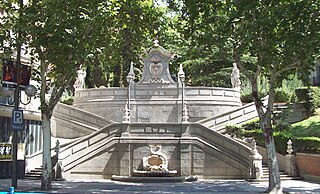
The Fountain of the Afflicted, also known as the Cristino Martos fountain, is a fountain in the city of Madrid located between Calle de la Princesa and Plaza de Cristino Martos. The original fountain, also called the fountain of San Joaquín, was replaced in 1952 by the one that has since been part of the monumental complex dedicated to the Spanish doctor and bacteriologist Jaume Ferran i Clua.
Sight 11: Palacio de Liria
The Liria Palace is a neoclassical palace in Madrid, Spain. It is the Madrid residence of the Dukes of Alba.
Sight 12: Plaza de Cristino Martos
The Plaza de Cristino Martos is an irregular space between the streets of La Princesa, to the south, and the confluent streets of San Bernardino, Manuel, Duque de Liria and Conde Duque, to the north-northeast. Although it was previously called the Plaza de los Afligidos, since 1895 it has been named after the orator Cristino Martos.
Sight 13: Museo de Arte Contemporáneo
The Museo de Arte Contemporáneo, formerly known as Museo Municipal de Arte Contemporáneo, is a municipally-owned museum in Madrid, Spain, located in the historic Conde Duque barracks. The museum was inaugurated in November 2001.
Wikipedia: Museo de Arte Contemporáneo (Madrid) (EN), Website
Sight 14: Museo ABC
Museo ABC is a museum in Madrid, Spain, dedicated to drawing and illustration.
Sight 15: Iglesia de Nuestra Señora de Montserrat
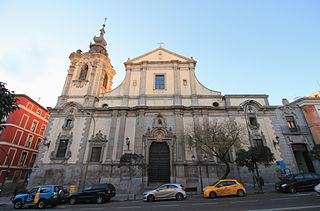
The Church of Our Lady of Montserrat is a Baroque-style, Roman Catholic church in central Madrid, Spain. Despite the imposing facade on Calle San Bernardo, the interior has relatively few bays because it was not possible to complete the building as originally projected.
Sight 16: Plaza del Dos de Mayo
The Plaza del Dos de Mayo is an urban square in Madrid, Spain. It is the centre of the Malasaña area, within the administrative neighborhood of Universidad.
Sight 17: Iglesia de Nuestra Señora de las Maravillas
The Church of Our Lady of Wonders is a Roman Catholic church in Madrid, Spain. With a portico facing Calle de la Palma, one side facing Calle del Dos de Mayo, and the oldest part of the enclosure of the monastery of San Antón facing the Plaza del Dos de Mayo.
Wikipedia: Iglesia de los Santos Justo y Pastor (Madrid) (ES), Url
Sight 18: Teatro Coliseum
The Coliseum building is a building in the Spanish city of Madrid, located at number 78 Gran Vía Street, in its last section. Built in the early 1930s, it has a theatre on its ground floor, although in the past these facilities were also used as a cinema.
Sight 19: Teatro Gran Vía
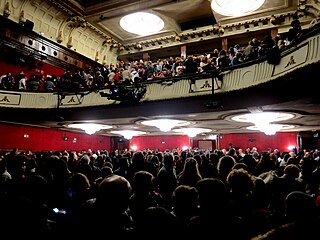
The former Gran Vía cinema, then Teatro Compac Gran Vía in Madrid, then Teatro de la Luz Philips Gran Vía and now "Teatro EDP Gran Vía" is an entertainment venue in the capital of Spain located at number 66 Calle Gran Vía.
Sight 20: Teatro Lope de Vega
The Lope de Vega Theatre is a theater in Madrid, Spain.
Sight 21: Teatro Arlequín Gran Vía
The Arlequin Theatre is a small theatre hall in Madrid (Spain), located at number 5 Calle de San Bernardo, next to Gran Vía, on the ground floor of a large building, within the set of services known as Los Sótanos. Created in 1965, after several renovations it has about 350 seats, and in 2014, it took the name of Arlequín Gran Vía.
Sight 22: Teatro Rialto
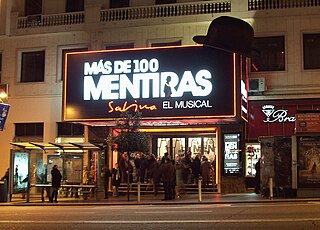
The Rialto Theatre is a venue in Madrid, located in the Rialto building, number 54 Gran Vía Street. It was inaugurated in 1930 as a cinema and became popular with the first films of Imperio Argentina and, later, for being the premiere room of El último cuplé, Sara Montiel's "magnum opus".
Sight 23: Iglesia de la Buena Dicha
The Church of la Buena Dicha is a church located in Madrid, Spain.
Sight 24: Iglesia de San Martín
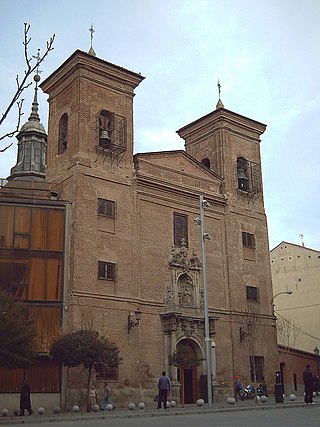
The Church of San Martín is a church located in Madrid, Spain. It was declared Bien de Interés Cultural in 1995.
Sight 25: Teatro de Lara
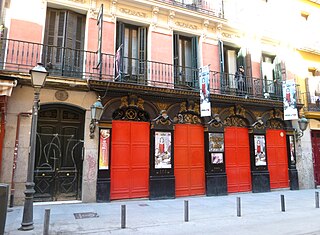
The Lara Theatre is an old Italian-style theatre built in 1879 at number 15 of the Corredera Baja de San Pablo in Madrid's Barrio de Maravillas, in the surroundings of what has been known as the Malasaña area since the last third of the twentieth century. It was born from the private initiative of the "plutocrat Cándido Lara", and was inaugurated on September 3, 1880. Among the most important premieres at the festival, Los interés creados, by Jacinto Benavente, in 1907, and Falla's ballet El amor brujo, in 1915, stand out. It has a capacity of 464 people and nine boxes.
Sight 26: Real Iglesia de San Antonio de los Alemanes
Saint Anthony of the Germans is a Baroque, Roman Catholic church located at the corner of Calle de la Puebla and Corredera Baja de San Pablo Madrid, Spain. It is noted for its baroque interior decoration. It was declared Bien de Interés Cultural in 1973.
Sight 27: Iglesia del Monasterio de Benedictinas de San Plácido
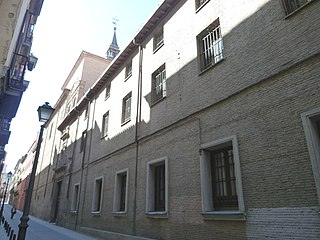
The Convent of San Plácido is a convent located in Madrid, Spain. It was declared Bien de Interés Cultural in 1943.
Sight 28: Teatro Alfil
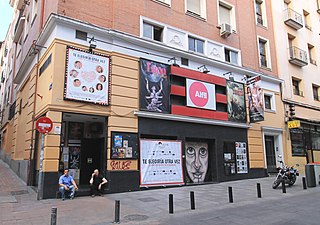
The Alfil Theatre is a venue located in the University district, in the Centro district (Madrid). The theatre is a building designed by the architect José Aspiroz that is located on Calle del Pez, founded in 1948 initially as a morning session cinema, called Cine Pez. In 1971 it was transformed into a small theater. The company was owned by brothers Luis and José García Ramos. In January 1993 an order was issued to close the premises by councillor Ángel Matanzo, an order that was suspended by the mayor José María Álvarez del Manzano, when the Yllana company took over the situation. The theater has managed to survive in the first decade of the 21st century thanks to the support of this company. In 2006 the theatre was attacked by an incendiary bomb, which was defused before its explosion, during a play by actor Leo Bassi.
Sight 29: Parroquia San Ildefonso
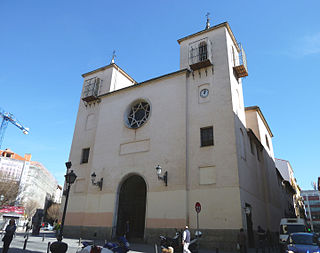
The Church of San Ildefonso y de los Santos Niños Justo y Pastor is a religious building, intended for Catholic worship, located in the square of the same name in the city of Madrid (Spain).
Sight 30: Capilla de Nuestra Señora de la Soledad
The Humilladero de Nuestra Señora de la Soledad is a small chapel located at number 44 Calle de Fuencarral in Madrid, on the corner of the old Calle de Santa María del Arco. It was built in 1712 because in the vicinity there was a painting of the Virgin of Our Lady of Solitude, to which the residents of the area professed great devotion. The small building is made of brick and ashlar masonry, and access to the temple is through a door crowned by a semicircular arch. It is the only one of its kind that remains in Madrid, along with the Rinconera virgin in the house-palace of Ricardo Augustín in the Plaza de Ramales.
Sight 31: Fuente de la Fama
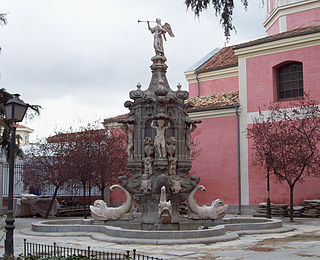
The Fountain of Fame is a Baroque fountain located in Madrid, Spain.
Sight 32: Catedral del Redentor
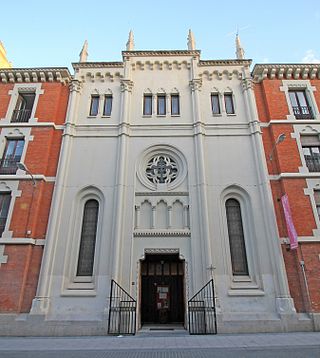
The Cathedral of the Redeemer is a Protestant (Anglican) church in Madrid. It is the principal church of the Reformed Episcopal Church of Spain which is a member of the Anglican Communion.
Sight 33: Museo del Romanticismo
The Museum of Romanticism is an art museum in Madrid, Spain, devoted to Romanticism. It was inaugurated in 1924 as Museo Romántico. It is one of the National Museums of Spain and it is attached to the Ministry of Culture.
Sight 34: Plaza de la Villa de París
The Plaza de la Villa de París, formerly Plaza del Palacio de Justicia, is a landscaped space in the Justicia neighborhood, in the central district of the city of Madrid, Spain. The large area is delimited by the streets of General Castaños, García Gutiérrez and Marqués de la Ensenada. It is presided over by the architecturally balanced complex of the buildings of the Supreme Court and one side of the National Court.
Sight 35: Iglesia Evangélica Alemana
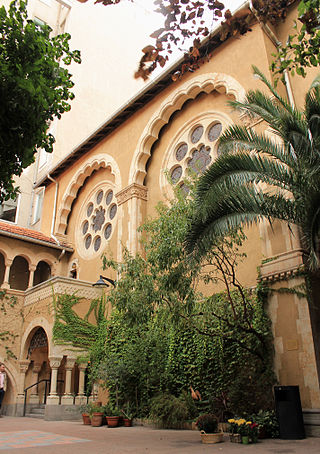
The German-speaking Evangelical Church of Madrid (Spain) is a temple of the German Evangelical Church, located at No. 6 Paseo de la Castellana. It is located near the Plaza de Colón, and was originally the German embassy in Spain. The temple has a courtyard in which a German-style Christmas market is set up at Christmas.
Share
How likely are you to recommend us?
Disclaimer Please be aware of your surroundings and do not enter private property. We are not liable for any damages that occur during the tours.
GPX-Download For navigation apps and GPS devices you can download the tour as a GPX file.

